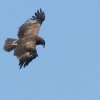A useful collection with different resources (sites and lessons plans) could be found on this link: 26 Great Sites for Physics Teachers You can find also games, exercises etc.
Behind the scenes
Age: 15 to 18 Goal: The students analyze a rather simple computer game like Pac-Man according to the concepts of object-oriented programming (class, object, instance, method etc.). What you need?: an online-version of the game (e.g. http://www.webpacman.com) enough computers for the groups Proceedings: 1. Introduction Object-oriented programming concepts UML-diagrams 2. Pupils’ task Study the game Full Article…
FIS
Researching for the MST-book I came across this interesting project of the University of Bonn (http://www.fis.uni-bonn.de/EnglishMaterial). From the website: “Remote Sensing has a growing relevance in the modern information society. In the FIS-Project, we promote a more intensive use of Remote Sensing in school lessons in order to get pupils interested in natural sciences or Full Article…
Let’s animate
Age: 14 – 18 Goal: Pupils create gif-animations to visualize chemical processes. What you need: Enough computers Image editing tool (e.g. GIMP) Proceedings: 1. Introduction: Present a chemical phenomenon and give some basic information. GIMP-Tutorial (gif-animation) 2. Pupils’ task: Find out what’s behind that phenomenon. Break it down into its basic components. Visualize the process Full Article…
Fly, fly away
Age: 10 to 12 Goal: Find out about the flyway of the lesser spotted eagle using Google Earth. Description: The pupils should learn about the different landscapes the eagle crosses on its way and categories them. In addition to that they should learn how to use computer technology to gather and process data. What you need: Full Article…
Starting out in STEM
From Australia (University of Tasmania), a study of young men and women in first year science, technology, engineering and mathematics courses! Starting out in STEM






 English
English Nederlands
Nederlands Deutsch
Deutsch Italiano
Italiano Español
Español Português
Português Română
Română Cymraeg
Cymraeg